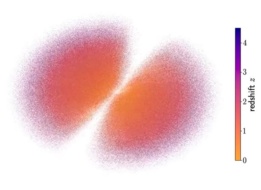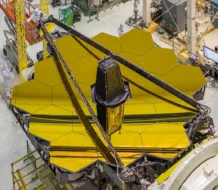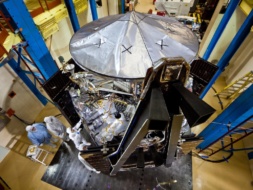In the beginning of the universe, in the first few hundred million years after the Big Bang there were no stars or light at all—just hot, dark, dense, shapeless matter.
Then came an era called the epoch of reionization. Mass started to clump together and ignite, forming stars and early galaxies.
Recently, JWST peered back into the early universe and obtained spectroscopic observations of these early galaxies, splitting apart light that has been traveling across space towards up for billions of years to suss out the chemical characteristics at its source. The findings indicate that dwarf galaxies were likely responsible for kicking off the reionization of the universe.
The results of the study, led by an international team of astronomers, were published yesterday in the journal Nature.
Primordial soup: To figure out what was going on that early in the universe’s history, JWST needed some help magnifying distant light from the early universe. The researchers took advantage of a natural magnification effect called gravitational lensing, which is when a large galaxy with a strong gravitational field in the foreground warps space so that objects far behind it appear closer.
This technique revealed eight very small, faint galaxies hidden behind a cluster of galaxies in the foreground called Pandora’s Cluster.
- These galaxies produced a surprising amount of ionizing radiation, capable of splitting hydrogen atoms into electrons and protons.
- The signal was four times greater than expected, the researchers reported.
Small but mighty: Though faint, the strength of the radiation coming from these ancient dwarf galaxies led the researchers to believe they could have been to blame for the majority of early reionization of the universe.
“These cosmic powerhouses collectively emit more than enough energy to get the job done,” said Hakim Atek, Sorbonne researcher and lead author of the paper, in a release. “Despite their tiny size, these low-mass galaxies are prolific producers of energetic radiation, and their abundance during this period is so substantial that their collective influence can transform the entire state of the Universe.”




